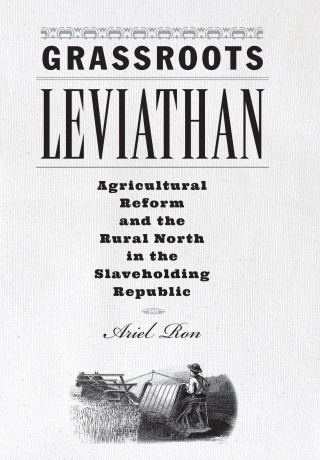The early months of 1862 saw the US Congress busy devising war plans. Soldiers were recruited on an unprecedented scale. An entirely new currency funded immediate military spending. Enslaved people flocking to Union lines demanded some kind of policy response. In the middle of all this, Congress somehow found time to create the U.S. Department of Agriculture and the land-grant university system, agencies that represented major departures in the forms of American governance and came to wield immense power. Over subsequent decades the USDA and land-grant universities fundamentally reshaped agricultural development in countless ways while serving as models of governmental autonomy and interventionism. Later, they became key centers of expertise for American foreign policy objectives. Yet scholars never wonder where these agencies came from. They never ask: How is it that Congress chose to fundamentally reorient the federal government’s relationship to the country’s largest economic sector and occupational category at precisely the moment it was absorbed with a total war against slavery?
I try to answer this question in my book, Grassroots Leviathan: Agricultural Reform and the Rural North in the Slaveholding Republic. I focus on a vast agricultural reform movement that arose between the American Revolution and the Civil War to demand novel federal policies that were fiercely opposed by slaveholders. These demands came to determine key aspects of the governing agenda pursued by the antislavery Republican Party, leading to a profound restructuring of the American state and its relationship to the agricultural sector.
A thumbnail sketch of the plot might go something like this: Immediately after the Revolution, patrician agricultural improvers, animated by Enlightenment ideals, tried to modernize American farming from above. They succeeded in generating widespread interest in scientific farming but were cast aside when a sweeping deference-to-democracy politics took hold in the 1820s. Over the next couple of decades an enormous specialized farm press emerged, creating a distinct agricultural public composed of millions of middle-class farmers. After about 1840, a new generation of reformers mobilized this public to win state-level subsidies for agricultural societies that pledged to reform and improve farming practices through the introduction of science and technology, including biological innovation. During the 1850s, reformers (now backed by a huge network of agricultural societies, fairs and journals) scaled up their ambitions to the national level. They called for new kinds of federal farm agencies and funding for agricultural education and research. Southern politicians fought these initiatives tooth and nail, but when secession left Congress in the hands of the Republican Party, action was swift. Despite the pressing demands of the Civil War, Congress acted because a vast movement had prepared the ground years ahead of time and continued to exert organized pressure.
